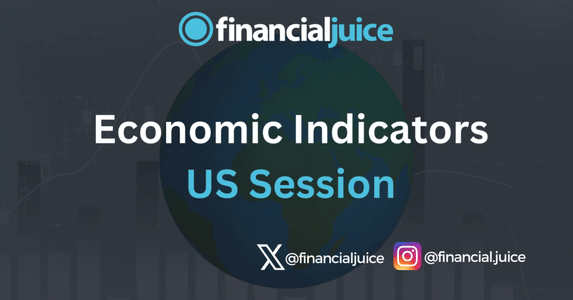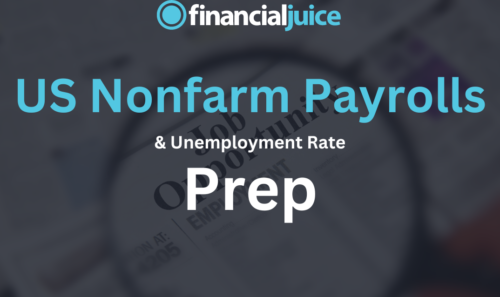
Week Ahead: Economic Indicators (US)
Wednesday 23rd October
09:45 ET
BoC Rate Decision
The Bank of Canada Rate Decision refers to the central bank’s decision on whether to raise, lower, or maintain the benchmark interest rate.
This decision is made during the BoC’s policy meetings, typically eight times a year, based on assessments of inflation, economic growth, and other financial conditions.
Changes to the interest rate influence borrowing costs for consumers and businesses and are a key tool in managing inflation and ensuring economic stability.
What to Expect
The BoC’s rate decisions have broad implications for the economy, affecting everything from mortgage rates to the Canadian dollar’s exchange rate.
The markets have been fluctuating between the possibility of a 25 or 50-bps cut from the BoC at this meeting.
A rate cut is likely to cause weakness in CAD and strength in Canadian stocks, though this reaction will be based on market expectations, as this underlines what is currently priced in by the markets.
Markets will also pay attention to the Rate Statement, which is released alongside the Rate Decision.
More hawkish tones (which could indicate pauses in rate cuts in the future) would likely cause strength in CAD and weakness in Canadian stocks.
In contrast, more dovish tones (indicating the potential for faster/steeper rate cuts in the future) could cause weakness in CAD and strength in Canadian stocks.
10:00 ET
US Existing Home Sales for September
US Existing Home Sales is a monthly report released by the National Association of Realtors (NAR) that measures the number of previously owned homes sold during the month.
This includes single-family homes, townhouses, condominiums, and co-ops.
The report provides insights into the health of the housing market, consumer confidence, and overall economic conditions.
An increase in existing home sales indicates strong demand and economic growth, while a decrease may signal a slowdown in the housing market or broader economy. It is a key indicator of real estate trends in the US economy.
What to Expect
This release is unlikely to cause a market reaction based on the prior months data.
Having said that, higher-than-expected home sales would underline strong demand for homes from US consumers, which would help alleviate fears of an economic slowdown.
This would be likely to cause strength across US asset classes (stocks, bonds, and the dollar)
If it comes out lower than expected, the opposite could be true.
10:30 ET
US Weekly EIA Crude Oil Inventories
The US Weekly EIA Crude Oil Inventories report, released by the Energy Information Administration every Wednesday, provides data on the current amount of crude oil held in storage across the United States.
This report helps gauge supply and demand dynamics in the oil market and can influence oil prices and market sentiment.
What to Expect
An increase in inventories suggests lower demand or higher supply, creating a potential downside in oil prices, while a decrease indicates higher demand or lower supply, causing a possible strengthening in oil prices.
14:00 ET
Fed’s Beige Book
The Fed’s Beige Book is a report published eight times a year by the Federal Reserve.
It provides a summary of current economic conditions across the 12 Federal Reserve Districts, based on anecdotal information from business contacts, economists, and market experts.
The Beige Book covers areas like consumer spending, employment, inflation, and business activity. It is used by the Federal Open Market Committee (FOMC) to help inform monetary policy decisions.
What to Expect
While it doesn’t contain hard data and is unlikely to cause a market reaction, it offers valuable insights into regional economic trends and sentiment.
Thursday 24th October
08:30 ET
US Weekly Initial & Continued Jobless Claims
Initial Jobless Claims measure the number of people filing for unemployment benefits for the first time in a given week. This provides an early indication of the health of the labor market and can signal changes in economic conditions.
Continued Jobless Claims represent the number of people who continue to receive unemployment benefits after their initial claim, reflecting longer-term unemployment trends.
A rising number of claims may indicate a weakening labor market, while a decline suggests improving conditions. These metrics are important for assessing the overall state of the economy and guiding monetary policy decisions.
What to Expect
With employment in focus at the moment, this report has been garnering a lot of market attention over the last 5 weeks.
A higher jobless claims number, indicating higher unemployment, would be likely to cause weakness across the US assets (dollar, stocks, and yields), as it feeds into the narrative of a hard landing/broader economic slowdown for the US economy as we come out of the tightening cycle.
A lower jobless claims number, indicating lower unemployment, would be likely to cause strength across the US assets, as it reassures the markets that the US economy may be able to exit the tightening cycle and enter the easing cycle without a recession/broader economic slowdown.
09:45 ET
US S&P Manufacturing & Services PMI October Prelim
The US S&P Manufacturing & Services PMI are monthly economic indicators compiled by S&P Global that measure the activity levels in the manufacturing and services sectors, respectively.
As diffusion indices, a reading above 50 indicates expansion, while below 50 signals contraction.
US S&P Manufacturing PMI: Assesses the performance of the manufacturing sector by surveying purchasing managers about new orders, production, employment, supplier delivery times, and inventory levels.
US S&P Services PMI: Evaluates the services sector by surveying purchasing managers on factors like new business, employment, input prices, and business expectations.
What to Expect
With the broader economy in focus as opposed to the path of monetary policy, the markets are going to be looking for signals on employment and demand for goods and services in this report.
Higher than expected PMIs would increase the chances for a soft landing, especially if the employment breakdown in the report is positive, as this indicates there is still enough demand to feed into corporate profits and overall US growth, which would be likely to cause strength in US stocks and the dollar.
The opposite is likely true if it were to come in lower than expected.
Friday 25th October
08:30 ET
US Durable Goods September Prelim
The US Durable Goods Orders Preliminary Report provides early estimates of orders for long-lasting manufactured goods, such as machinery, appliances, and transportation equipment.
This data is an indicator of business investment and consumer confidence, as durable goods purchases typically require a significant capital outlay and reflect long-term economic expectations.
Higher-than-expected orders suggest potential economic growth and increased business activity, while lower-than-expected orders may indicate a slowdown in manufacturing and overall economic activity.
Policymakers and investors analyse this report to gauge the health of the manufacturing sector and make informed decisions about future economic trends.
What to Expect
This report is unlikely to get a market reaction.
Having said that, If durable goods come in higher than expected, this indicates higher consumer demand for durable goods, which would underscore resilience in the consumer, and help alleviate fears of a broader economic slowdown.
This could lead to strength in the dollar and US stocks, as well as government bond yields.
The opposite would be true if it came in lower than expected
Keep in mind that if the number comes in considerably higher than expected, this could be seen as an upside inflation risk, which could lead to weakness in US stocks, and strength in the dollar and government bond yields, so the markets will be weighing 2 sided risks when analyzing this report.
10:00 ET
The University of Michigan Sentiment October Final
Conducted by the University of Michigan, the UMich survey gauges consumers’ attitudes and expectations regarding personal finances, business conditions, and overall economic prospects.
The survey results are presented as an index, with higher values indicating greater consumer confidence.
In this report, respondents can also give their forecasts for 1-year and 5-10-year ahead inflation expectations, which the markets pay attention to.
What to Expect
When it comes to the headline sentiment read, a higher consumer sentiment number at the moment would be seen as bullish for US stocks and the dollar, as it indicates that the consumer is feeling good about the economic environment, which reduces the chances for a hard landing coming out of this Fed tightening cycle.
When it comes to inflation expectations, the markets will want to see these coming in lower than expected, which would increase confidence in the Fed’s ability to reduce rates and start to stimulate the areas of the economy that have shown weakness.
This would likely cause strength in US stocks.





